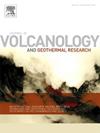限制长岛(巴布亚新几内亚)和塔鲁梅(日本)火山喷发和其他17世纪火山喷发的时间和气候强迫
IF 2.3
3区 地球科学
Q2 GEOSCIENCES, MULTIDISCIPLINARY
Journal of Volcanology and Geothermal Research
Pub Date : 2025-04-17
DOI:10.1016/j.jvolgeores.2025.108346
引用次数: 0
摘要
17世纪是几个主要的(VEI >;5)热带和温带火山喷发。其中包括长岛(巴布亚新几内亚)的VEI 6喷发,根据历史记载、放射性碳测年限制和南极冰芯记录,它被认为发生在公元1665年至1668年之间。如果根据这个冰芯年代学接受这样的归因,就意味着在南极洲的所有冰芯记录中,在17世纪存在一个迄今未被诊断出的长达6年的测年错误。在这里,我们通过温度年代学和来自南极洲和格陵兰岛的一系列记录的高分辨率冰川化学测量来限制长岛喷发的时间。我们确定了与格陵兰岛1667 CE硫酸盐峰相关的cryptotephra玻璃碎片,并将其地球化学属性归因于日本历史上的Tarumae (Shikotsu)火山喷发。这一归因表明,这一时期的冰芯记录并没有错位,并将长岛火山喷发的时间细化为两个候选日期:公元1654±1年和1662±1年。两个候选日期都在先前基于放射性碳定年(1651年和1671年,95.4%概率)的最佳年龄估计范围内。然而,这里我们暂定使用1662±1 CE作为长岛火山喷发的时间,因为先前的放射性碳约束表明,在1655 - 1665 CE之间发生的概率为68.2%。有了更高的定年信心,我们修正了整个17世纪的火山平流层硫注入(VSSI)估计。利用这些与古代用记录一起,我们探索了北半球对长岛和塔鲁梅火山爆发的气候反应,发现它们与本世纪其他主要(VEI >5)火山爆发相比更为有限。最终,这项研究强调了冰芯年表的准确性,对火山强迫重建和自然气候变率的探测和归因研究具有更广泛的意义。本文章由计算机程序翻译,如有差异,请以英文原文为准。
Constraining the timing and climate forcing of the Long Island (Papua New Guinea) and Tarumae (Japan) eruptions and other 17th century volcanic eruptions
The 17th century was a period when several major (VEI > 5) tropical and extratropical volcanic eruptions occurred. Amongst these is the VEI 6 eruption of Long Island (Papua New Guinea), which is suggested to have occurred between 1665 and 1668 CE based on historical accounts, radiocarbon dating constraints, and an ice-core record from South Pole. Accepting such an attribution on the basis of this ice-core chronology would imply a hitherto undiagnosed dating error of up to 6 years during the 17th century within all ice-core records from Antarctica. Here we constrain the timing of the Long Island eruption through tephrochronology and high-resolution glaciochemical measurements from an array of records from Antarctica and Greenland. We identify cryptotephra glass shards in association with the Greenland 1667 CE sulfate peak and geochemically attribute them to the historic Japanese Tarumae (Shikotsu) eruption. This attribution shows that the ice-core records are not misaligned during this period and refines the timing of the Long Island eruption to two candidate dates: 1654 ±1 CE and 1662 ±1 CE. Both candidate dates are within previous best age estimates based on radiocarbon dating (1651 and 1671 CE, 95.4 % probability). However, here we tentatively use 1662 ±1 CE as the timing of the Long Island eruption, as previous radiocarbon constraints suggest a 68.2 % probability of occurrence between 1655 and 1665 CE. With a higher confidence in the dating, we revised volcanic stratospheric sulfur injection (VSSI) estimates across the 17th century. Using these alongside paleo-proxy records, we explored the Northern Hemisphere climate response to the Long Island and Tarumae eruptions and found them to be more limited compared to other major (VEI >5) eruptions during this century. Ultimately, this study has highlighted the accuracy of ice core chronologies, having wider implications for volcanic forcing reconstructions and detection and attribution studies of natural climate variability.
求助全文
通过发布文献求助,成功后即可免费获取论文全文。
去求助
来源期刊
CiteScore
5.90
自引率
13.80%
发文量
183
审稿时长
19.7 weeks
期刊介绍:
An international research journal with focus on volcanic and geothermal processes and their impact on the environment and society.
Submission of papers covering the following aspects of volcanology and geothermal research are encouraged:
(1) Geological aspects of volcanic systems: volcano stratigraphy, structure and tectonic influence; eruptive history; evolution of volcanic landforms; eruption style and progress; dispersal patterns of lava and ash; analysis of real-time eruption observations.
(2) Geochemical and petrological aspects of volcanic rocks: magma genesis and evolution; crystallization; volatile compositions, solubility, and degassing; volcanic petrography and textural analysis.
(3) Hydrology, geochemistry and measurement of volcanic and hydrothermal fluids: volcanic gas emissions; fumaroles and springs; crater lakes; hydrothermal mineralization.
(4) Geophysical aspects of volcanic systems: physical properties of volcanic rocks and magmas; heat flow studies; volcano seismology, geodesy and remote sensing.
(5) Computational modeling and experimental simulation of magmatic and hydrothermal processes: eruption dynamics; magma transport and storage; plume dynamics and ash dispersal; lava flow dynamics; hydrothermal fluid flow; thermodynamics of aqueous fluids and melts.
(6) Volcano hazard and risk research: hazard zonation methodology, development of forecasting tools; assessment techniques for vulnerability and impact.

 求助内容:
求助内容: 应助结果提醒方式:
应助结果提醒方式:


